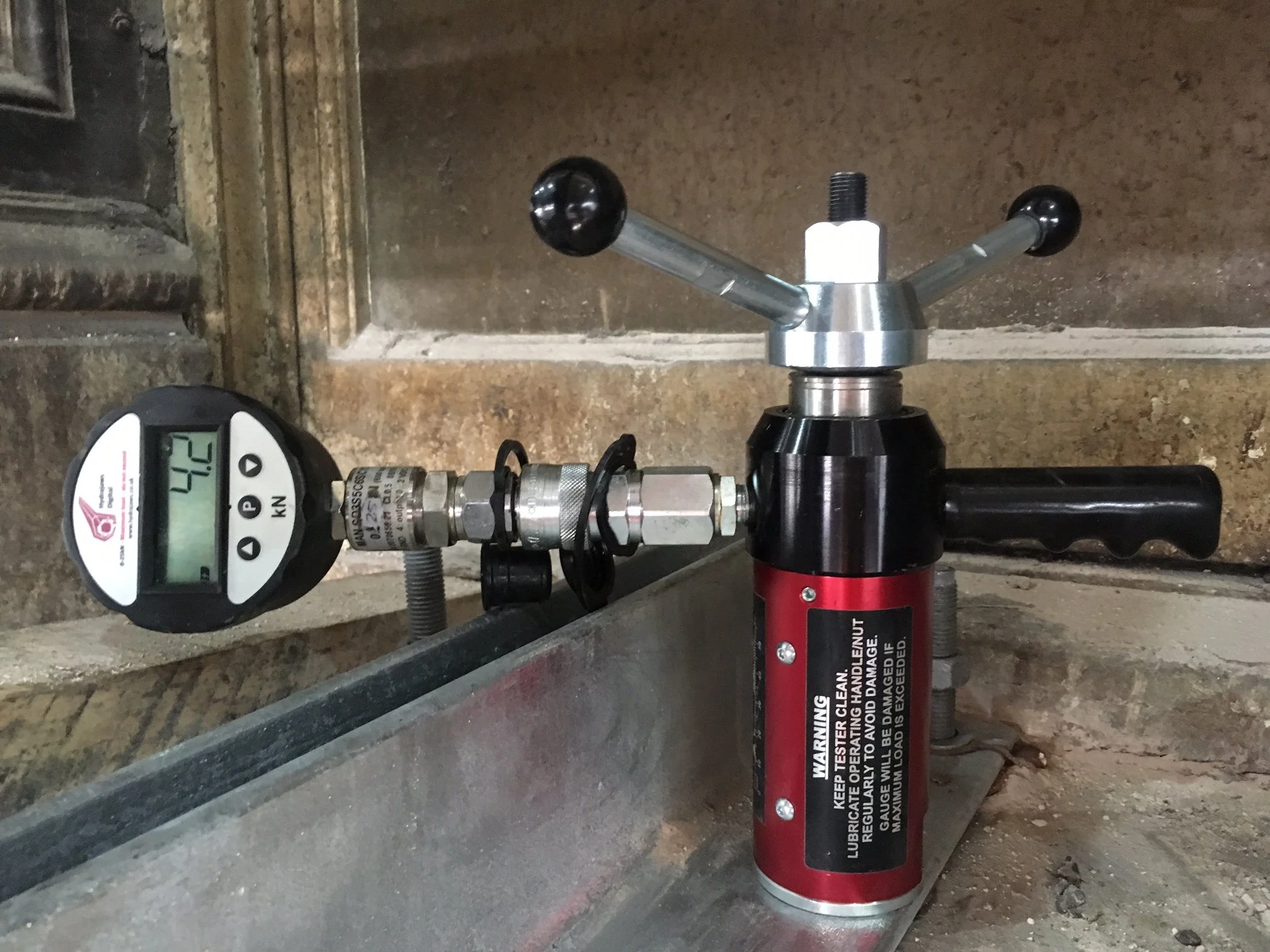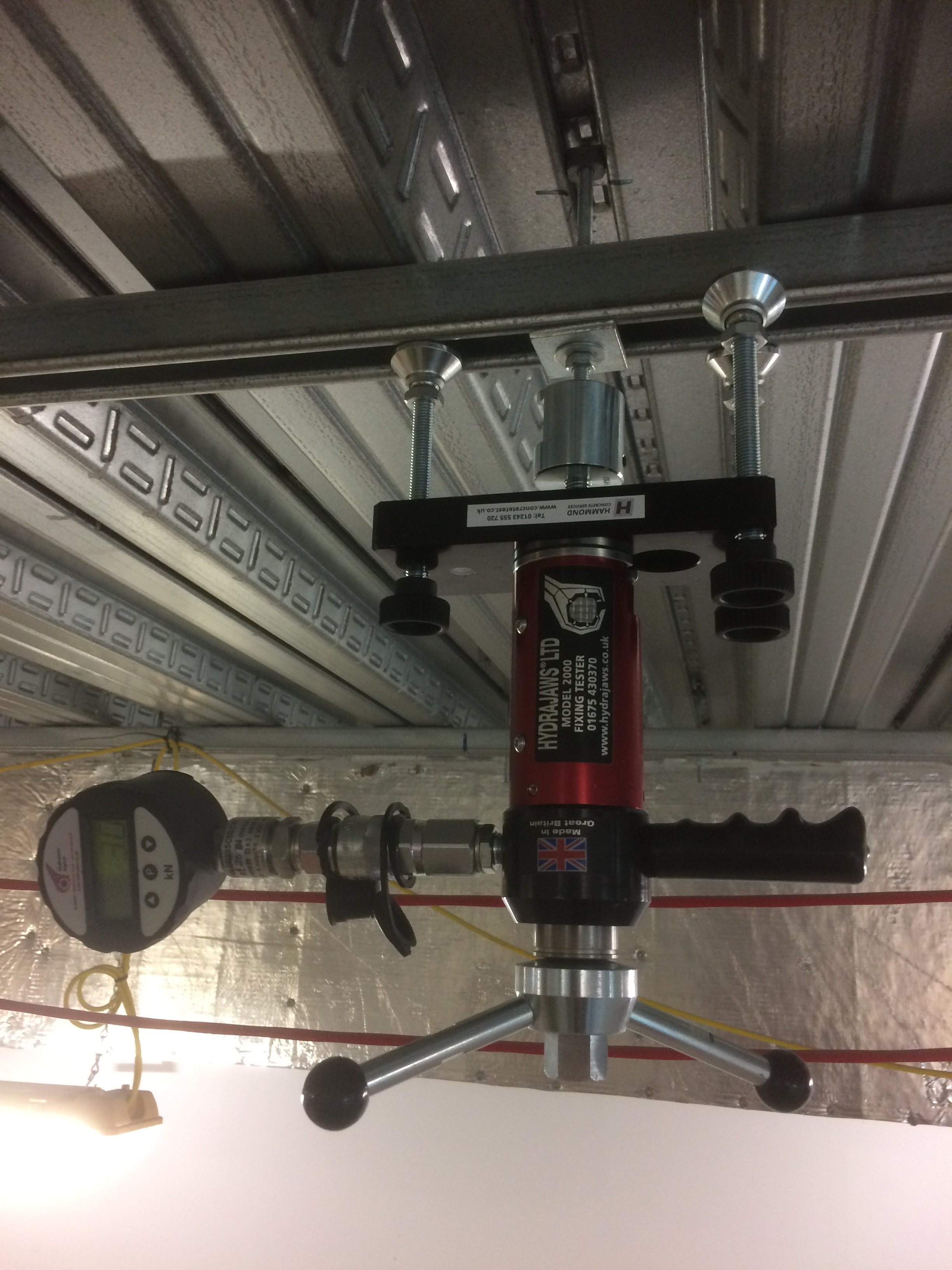Pull Testing
Despite often being so small, fixings are probably the most important aspect of any structure. From the smallest screw to the biggest bolt, fixings are the glue that holds a structure together. It’s very easy to overlook the extreme loads fixings are put under. As such, it’s important to make sure that fixings aren’t going to fail. So, how do you test for something like that?
Pull testing is a catch-all term for testing that determines the load bearing capacity of fixings. It’s possible to test anything from small screws, eyebolts, studs, bolts to reinforcing bars in any size or diameter to walls, slabs and soffits. All tests on fixings are carried out in accordance with British Standard BS8539.
Pull out testing involves attaching a test rig to the fixing in question. The rig we choose depends on the situation, whether it is a standard vertical pull from a floor slab or a test requiring bespoke apparatus due to access constraints. This rig applies a pressure specified by the client to the fixing. The test can determine failure, resistance or quality verification.
Our in-house equipment is capable of completing testing to a maximum of 600kN. The largest capacity equipment is the hydraulic hollow cylinder kit which will accommodate a fixing to a maximum of 54mm diameter. For more mid-range jobs, we can offer testing using hydrajaws models 2000, 2008 & 2050. These are designed to test small to medium fixings such as Hexagonal head bolts, eye bolts, studs and screws. Finally we can test using the Elcometer 510. This can be utilised for concrete bond testing or paint adhesion testing to British standards BS 1881-207 & BS EN 24624.
Pull testing is important for diagnosing potential issues early, before a catastrophic failure can happen
If you would like more information on the other material testing services we offer, click here. For a competitive quote or to discuss our services with one of our qualified surveyors or engineers, contact us here


